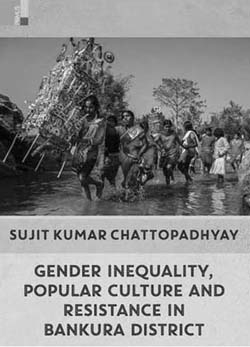Sujit Kumar Chattopadhyay’s book titled Gender Inequality, Popular Culture and Resistance in Bankura District is in keeping with the spirit of our times. There has been a rethink in gender studies on the importance of cultural norms and institutions in sustaining gender inequality compared to the more visible social and economic structures such as family and market. Studies have explored the strength of gender norms perpetuated through popular culture and the insidious ways in which it operates to solidify and naturalize gender based inequality (Chowdhry 1994, Uberoi 2009). The turn to cultural studies in gender studies set out as its agenda the need to take cultural forms seriously and use them as subversive sites of resistance. The book therefore contributes to the growing research on popular culture as a site of gender inequality as well as its resistance.
The book set out with the objective of analysing the historical evolution of popular culture in tandem with other gendered institutions in society. Since the backdrop of the book is rural society, the author examines orally transmitted elements of popular culture loosely defined as folk culture. The author collected elements of popular culture such as folk songs, riddles, proverbs, rhymes and vows from rural folk of the district of Bankura. Songs of resistance which adapt and borrow from popular culture are also collected from feminist or civil or political organizations working on issues of gender such as access to education, credit and political participation.

